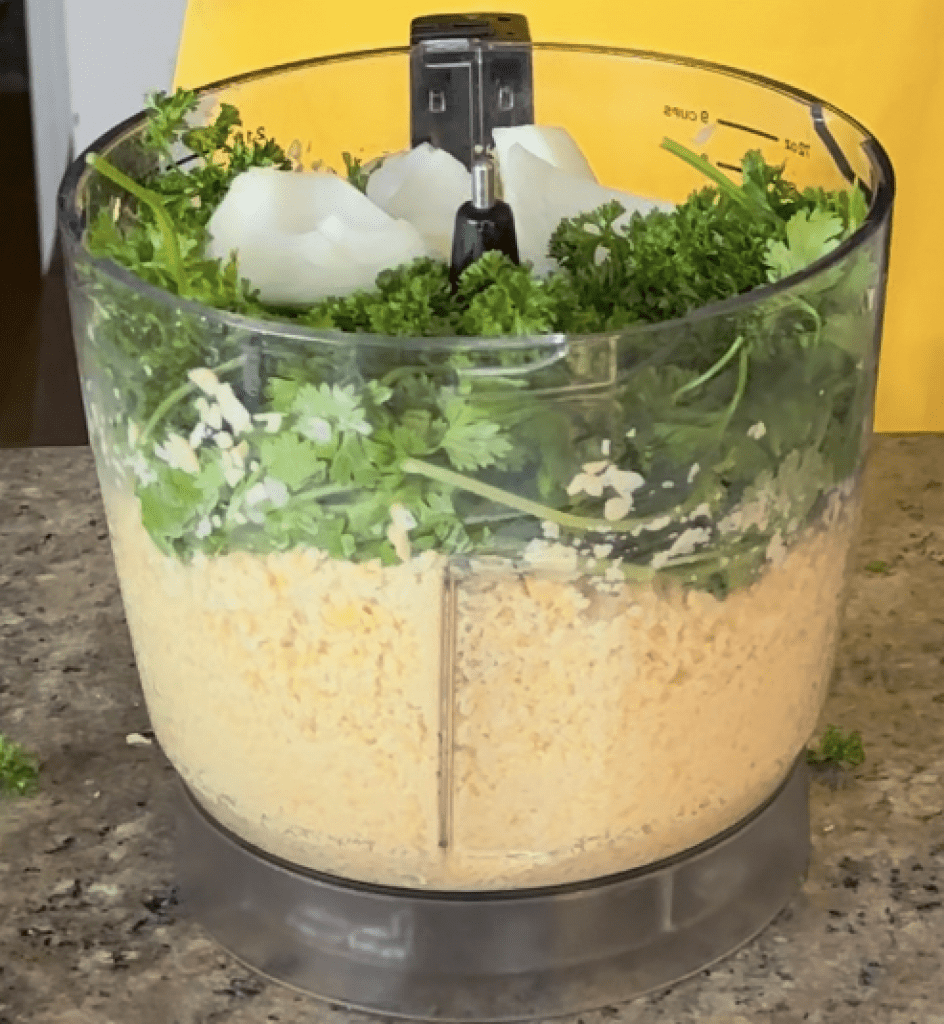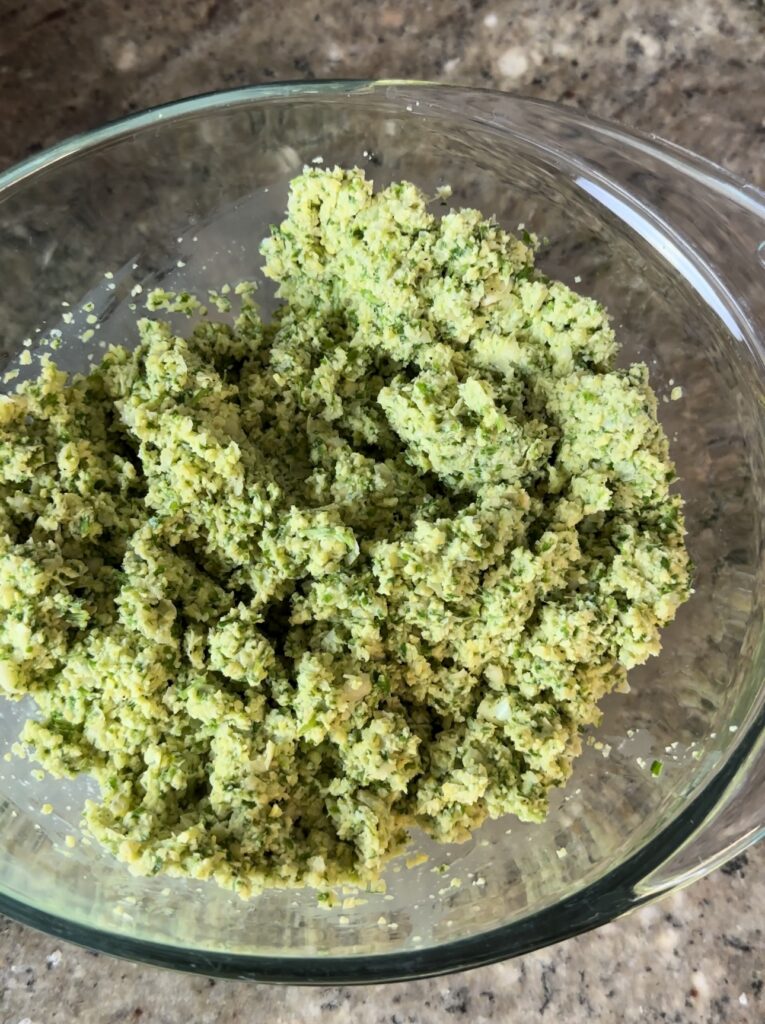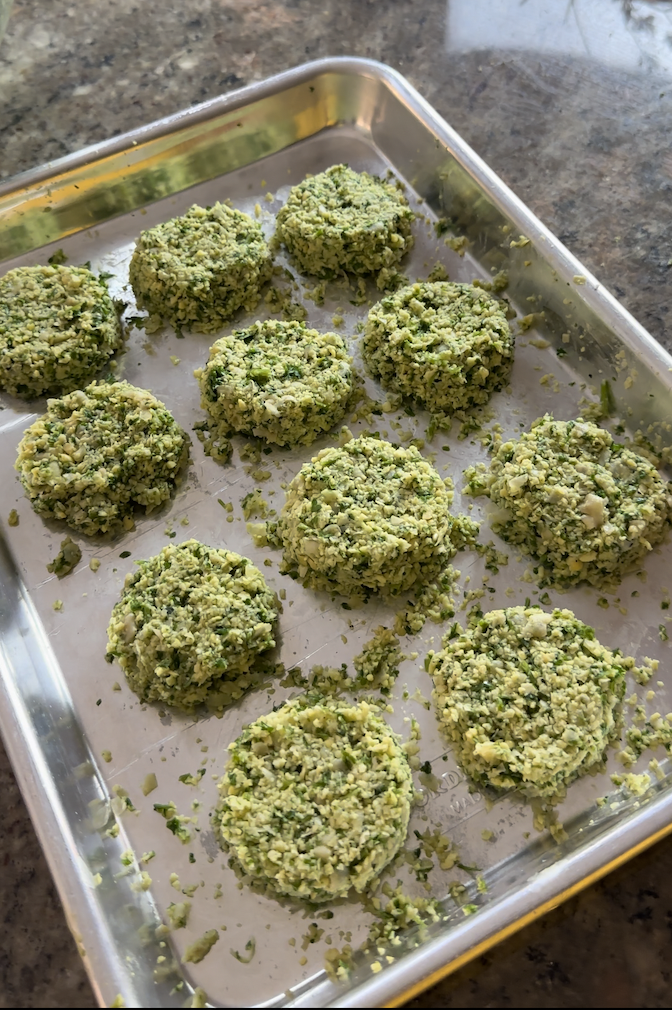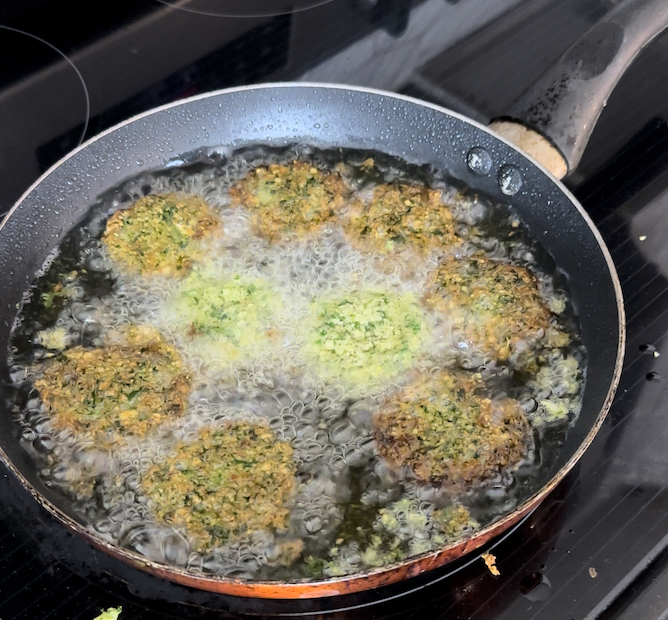Jump to Recipe
In recent decades, falafel has transcended cultural boundaries, becoming an international sensation and leaving its mark on street food scenes from New York to Lebanon. Its popularity as a quick, flavorful, and vegetarian-friendly snack has turned it into popular and widespread dish all over the world. The versatility of falafel has allowed it to adapt to various culinary preferences, with each region adding its own unique twist to this beloved chickpea creation.
The rise of falafel speaks to the growing awareness and appreciation for plant-based alternatives in modern age diets. With its satisfying texture and savory taste, falafel has become a staple for vegetarians.. Whether enjoyed in a pita pocket, as part of a salad, or on its own with a side of tahini sauce, falafel continues to be consumed all around the world.

What is Falafel?
Falafel is a popular Middle Eastern dish made from ground chickpeas mixed with various herbs and spices, and then deep-fried or baked to create small, round patties or balls. Common ingredients in falafel include garlic, onions, coriander, cumin, and parsley.
One of the key attributes that contribute to falafel’s appeal is its satisfying combination of textures. The exterior boasts a crispy, golden-brown crust, while the interior remains tender and moist. It can be enjoyed in a sandwich or in a platter with hummus.
Ta’ameya vs Falafel Food Feuds
It is said that Ta’ameya has traces to Ancient Egypt and might be the true original falafel. Egyptians take pride in their falafel as it is a common and affordable breakfast staple. During my visit to Egypt last year, I approached a local street vendor and offered to assist in making falafel. Using a large granite stone, akin to the size of the largest mortar and pestle, I mixed the falafel ingredients. The process resembled an ancient method, reminiscent of Ancient Egypt, showcasing a very traditional way of preparing ta’ameya.
In the latest episode of Food Feuds, we took a journey comparing Lebanese-style falafel with its Egyptian counterpart, Ta’ameya. The battle between these Middle Eastern crispy vegetarian patties revolves around their distinct textures and flavors.
One common critique of falafel, especially the Lebanese style found in fast-food joints, is its tendency to be dry and chalky. However, in this episode, we tackled this concern head-on with a homemade recipe that introduces a game-changing element— more herbs. By incorporating a medley of herbs into the chickpea mixture, we not only banished the dry texture but also achieved a remarkably fluffy and softer interior falafel.
The debate between fava beans and chickpeas adds an extra layer of complexity to the falafel experience. Some enthusiasts lean towards the mild flavor of fava beans, appreciating the unique taste they bring to the table, while others swear by the consistency and familiarity of chickpeas. It’s a matter of personal taste, and both styles carry their own charm, contributing to the rich tapestry of flavors in Middle Eastern cuisine.
In the realm of falafel variations, it’s fascinating how seemingly small adjustments in ingredients and preparation methods can yield such significant differences in taste and texture. The episode not only highlighted the herb-infused solution to dryness but also underscored the importance of technique in achieving that coveted fluffiness.
Food Feuds continues to explore these culinary face-offs, providing insights that go beyond taste preferences. The episode not only offers a solution to the dryness issue but also delves into the cultural and regional nuances that make Lebanese-style falafel and Egyptian Ta’ameya standout contenders in the world of street food. Stay tuned for more Food Feuds, where we celebrate the diversity and deliciousness of global cuisine, one dish at a time.




Falafel-Lebanese Style
Ingredients
- 8 oz Dried Chickpeas Soaked overnight for 20 hours. You may need to replace the water.
- 1 Small Onion
- 1 cup Parsley Half of a bundle
- 1 cup Cilantro Half of a bundle
- 2-3 Cloves of Garlic
- 1 tbsp Coriander
- 1 tbsp Cumin
- 1/2 tbsp Baking Powder
- Canola Oil For frying
- Salt and Pepper to Taste
Instructions
- Soak the chickpeas for 20 hours. You might need to add more water during this period if your water gets low.
- After soaking, the chickpeas should be larger in size. Drain the chickpeas.
- You can add all the ingredients listed above except for the baking powder and blend it; however; your food processor may get jammed. *Note 2
- Let the falafel sit in the fridge for at least an hour. (optional but recommended for best consistency)
- Now add the baking powder to the falafel mixture and stir it in with a fork or blend it if it is still in the food processor container.
- Roll into little ball shapes or patties. I used a measuring cup to get even patties.
- Fry the falafel in hot canola oil.
- Serve with pita and tahina.

